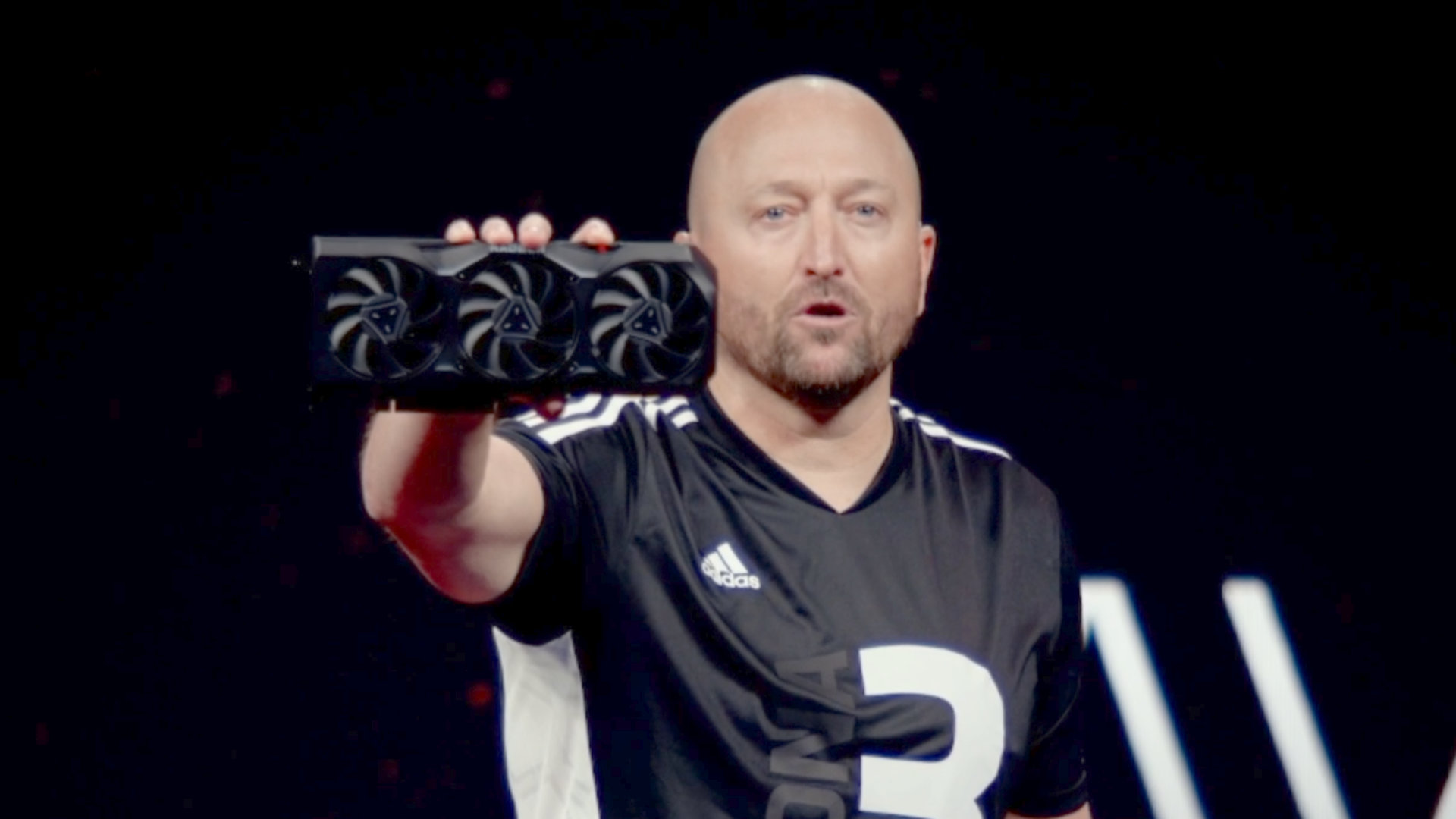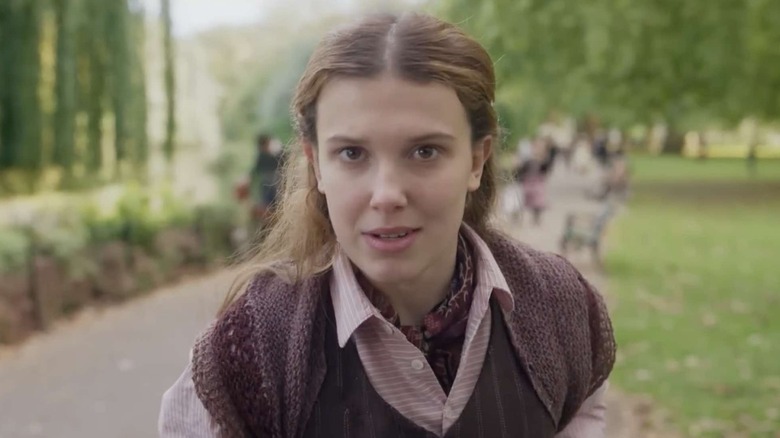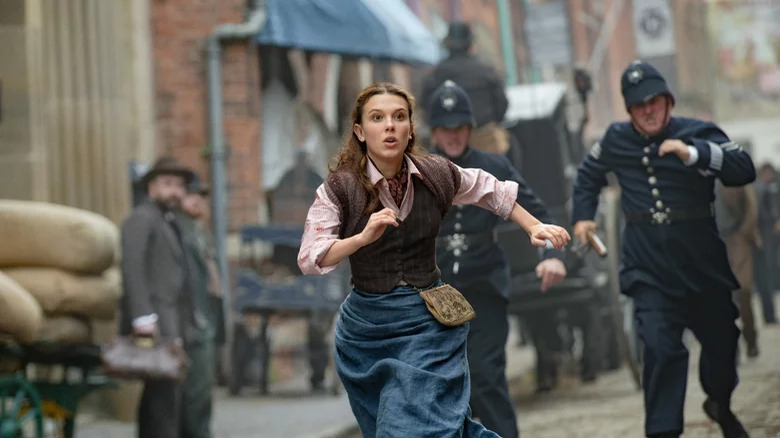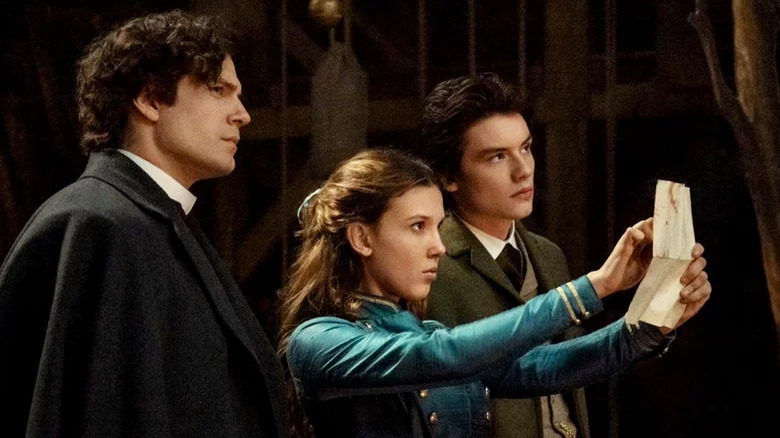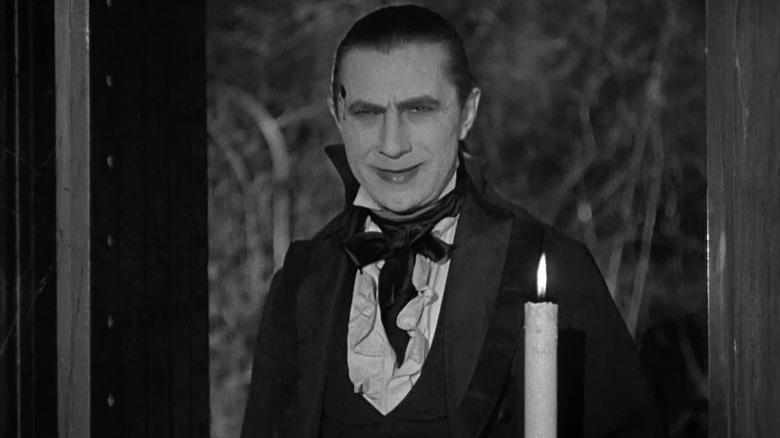
(Welcome to Year of the Vampire, a series examining the greatest, strangest, and sometimes overlooked vampire movies of all time in honor of "Nosferatu," which turns 100 this year.)
Vampires may be fundamentally incapable of self-reflection (seeing as how they don't show up in mirrors and all), but that doesn't mean we can't reflect on them. And so we have, all throughout 2022. The Year of the Vampire is almost over now, and these last 11 months have been an educational, blood-spattered ride through one of film history's oldest genres.
With the first 50 articles in this series, we spotlit individual vampire movies, beginning with F.W. Murnau's original "Nosferatu: A Symphony of Horror" and ending with Werner Herzog's 1979 remake "Nosferatu the Vampyre." However, if you've been following along at all, you might know we've jumped around in time since January and analyzed over two dozen 20th-century vampire films.
This list adds to that with 20 more titles, from our catacomb to yours, thereby closing out the 20th-century portion of our official Year of the Vampire coverage. (We'll have another list of additional 21st-century films out next month.)
Before we dive into further recommendations, here's the full alphabetical list of 20th-century vampire movies we've put under the microscope so far.
Every 20th-Century Vampire Movie We've Covered
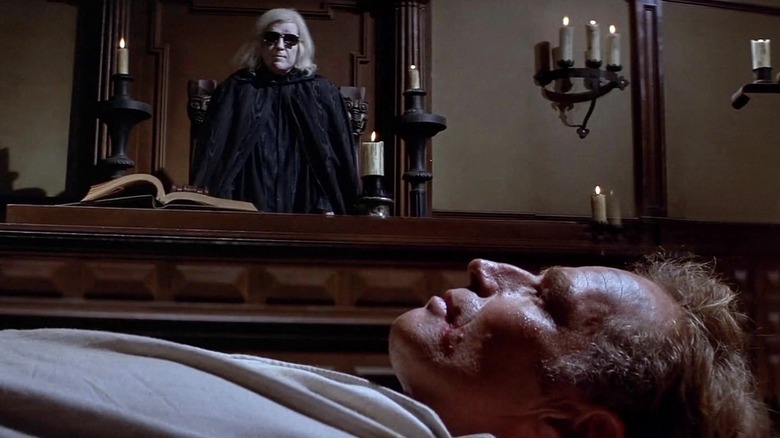
"The Addiction" (1995)
"Blade" (1998)
"Bram Stoker's Dracula" (1992)
"Buffy the Vampire Slayer" (1992)
"Cronos" (1993)
"Daughters of Darkness" (1971)
"Dracula" (1931)
"Dracula: Dead and Loving It" (1995)
"Dracula's Daughter" (1936)
"Fright Night" (1985)
"From Dusk Till Dawn" (1996)
"Ganja & Hess" (1973)
"Horror of Dracula" (1958)
"The Hunger" (1983)
"Interview with the Vampire" (1994)
"The Last Man on Earth" (1964)
"Lifeforce" (1985)
"The Lost Boys" (1987)
"Martin" (1977)
"Mr. Vampire" (1985)
"Near Dark" (1987)
"Nosferatu: A Symphony of Horror" (1922)
"Nosferatu the Vampyre" (1979)
"Planet of the Vampires" (1965)
"Vampire Hunter D" (1985)
"The Vampire Lovers" (1970)
"Vampyr" (1932)
Different writers and editors here at /Film have left their bloody fingerprints on the features above, and I've personally perused each one of them, just as a reader. So should you, if you're a vampire true believer. Speaking of which, for anyone who feels better serviced, morally, by movies with the need to bleed (rather than the old "Top Gun" need for speed), here are 20 more 20th-century vampire movie bites, to consider for your eternal viewing pleasure.
Drácula (1931, Spanish)
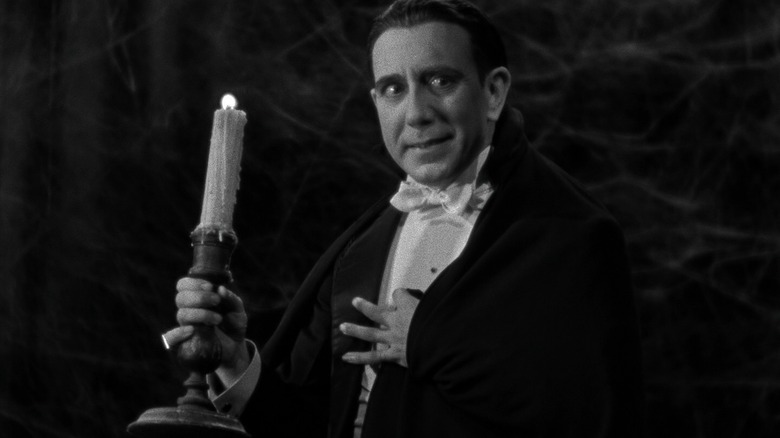
Before dubbing and subtitles became the go-to practice for marketing Hollywood films to foreign countries, studios like Universal would shoot multiple versions of the same movie on the same sets with different actors. That's what happened with "Drácula," which had Carlos Villarías and a Spanish-speaking cast filming at night on the set where Bela Lugosi and an English-speaking cast had shot scenes during the day. They were the true vampires. Director George Melford consulted the footage Tod Browning was coming up with for the Lugosi version and relied on an interpreter to help translate for him as he had Villarías play "Conde Drácula."
The result was a film that some say is superior to the better-known English version, with more room to breathe, in terms of both low-cut negligees and a 29-minute longer runtime. It's in the National Film Registry now, but the Spanish edition of "Drácula" was forgotten for several decades, and it's still not streaming anywhere, though you can find it as a bonus feature on the DVD of Browning's "Dracula" and in the "Dracula: Complete Legacy Collection" Blu-ray set.
Mark Of The Vampire (1935)
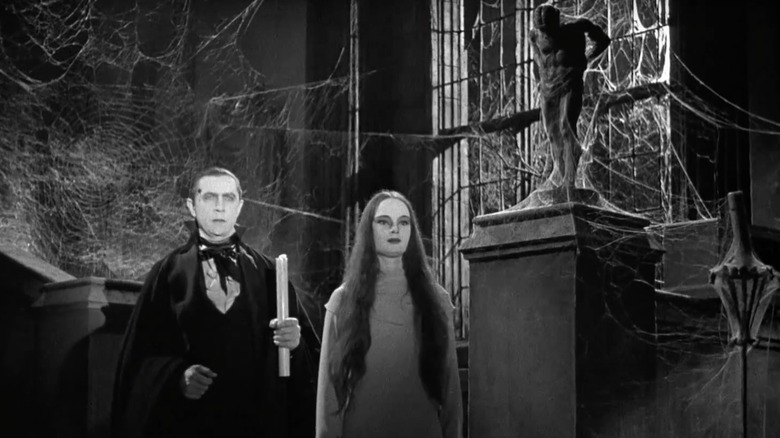
By 1935, vampires were already old hat for the aforementioned Tod Browning and Bela Lugosi. They reunited on this film after "Dracula," trading on Lugosi's image in a meta murder mystery that involves actors masquerading as the undead. Lugosi's Count Mora is accompanied by Luna (Carroll Borland), who influenced the look of Lily Munster in the mid-1960s "Munsters" sitcom. One gets the sense that Browning was bored with bloodsuckers by now and hamming it up a bit, and in his limited screen time, Lugosi also lapses into vampire self-parody here. The actor's Hungarian accent had become synonymous with Count Dracula, and he faced typecasting as a result.
With a 60-minute runtime, "Mark of the Vampire" is a holdover from the days when feature films could be as short as the length of some modern TV episodes. Earlier this year, we examined how Dracula and vampires influenced other movie monsters, and that influence extends here to Ghostface, whose first victim in "Scream" was played by Drew Barrymore, the grandniece of "Mark of the Vampire" star Lionel Barrymore.
Isle Of The Dead (1945)
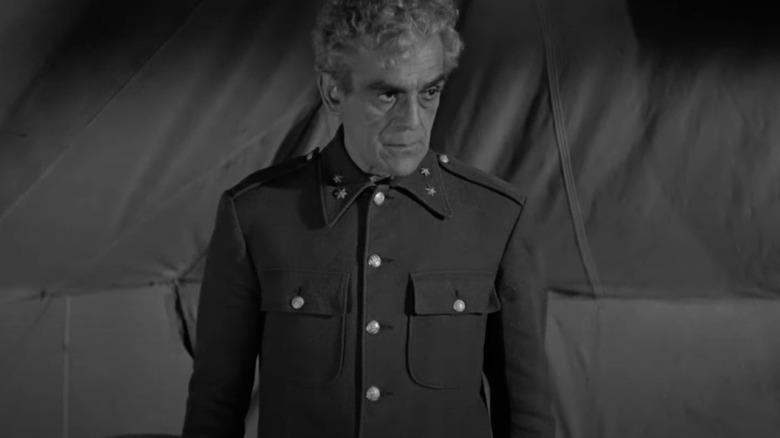
The 1940s were a fallow period for vampire films, as the real-life horrors of war eclipsed the make-believe horrors of movie monsters. Audiences knew Boris Karloff as Frankenstein's monster and the Mummy, but in "Isle of the Dead" — which hit theaters just five days after World War II ended — he played a Balkan War general under the grips of superstition about the vorvolaka, a kind of Greek vampire that "drains people of their strength and vitality until they die."
Quarantined on an island where a breakout of septicemic plague has occurred, the general and other characters face the same fears about shaking hands and gathering in groups that people living through the pandemic now have faced. At one point, we see them scrubbing up in an actual hand-washing montage. Karloff spouts the apocalyptic quote, "The horseman on the pale horse is Pestilence. He follows the wars."
Citing its premature burial scene as one that "never fails to scare" him, Martin Scorsese named "Isle of the Dead" his second favorite horror movie of all time. It may have helped inspire his own island-set psychological thriller, "Shutter Island."
Abbott And Costello Meet Frankenstein (1948)
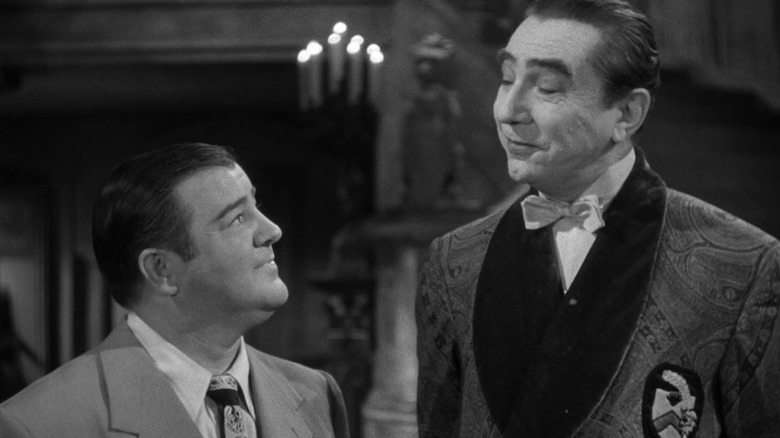
With all due respect to Glenn Strange's creature, "Abbott and Costello Meet Frankenstein" is named for the wrong Universal Monster. The real mastermind here, the one hypnotizing people, turning them into vampires, and plotting a brain transplant for Lou Costello's character, is the boss of all bloodsuckers: Bela Lugosi's Dracula. His castle, we see, is located on a Florida island, and as a native of the Sunshine State, I can confirm the existence of vampires in the State Capitol and the "Winter White House" (Mar-a-Lago), despite their aversion to sunlight.
Though his image became forever entwined with the character, and he milked that with appearances in other low-rent vampire movies, "Abbott and Costello Meet Frankenstein" was the first and last time Lugosi officially reprised his role as Dracula in a Universal film. Frankenstein and the Wolf Man (Lon Chaney Jr.), the latter of whom was no slouch in the horror department, either, each headlined sequels to their solo films. Yet Dracula, the monster who paved the way for all those others, was left canonically dead until he had his run-in with a couple vaudeville comedians in this classic horror comedy.
The White Reindeer (1952)
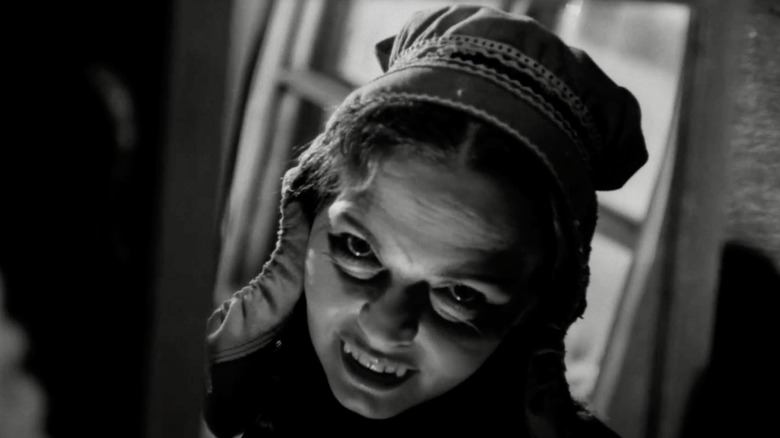
A reindeer, you say? In a vampire movie? In this economy? But that's the beauty of it: "The White Reindeer" had already thought of the idea 70 years ago. We've seen Dracula transform into all manner of creatures, from wolves to bats to rats, so what's to stop a Finnish woman from sprouting vampire fangs and morphing into a reindeer? Absolutely nothing.
Keep in mind, Dracula often serves as a bloodsucking bigamist with three wives in his crypt. Newlywed Pirita (Mirjami Kuosmanen) would be happy just to have her one husband home with her, and she's willing to sacrifice a living thing to do it. Once upon a time, the Cannes Film Festival had an award called "Best Fairy Tale Film," and "The White Reindeer" won it in 1953, though it's sometimes classified now as an early work of folk horror. It was shown in the documentary "Woodlands Dark and Days Bewitched: A History of Folk Horror," and we also featured it this year as one of the international titles in our own folk horror world tour.
The Brides Of Dracula (1960)
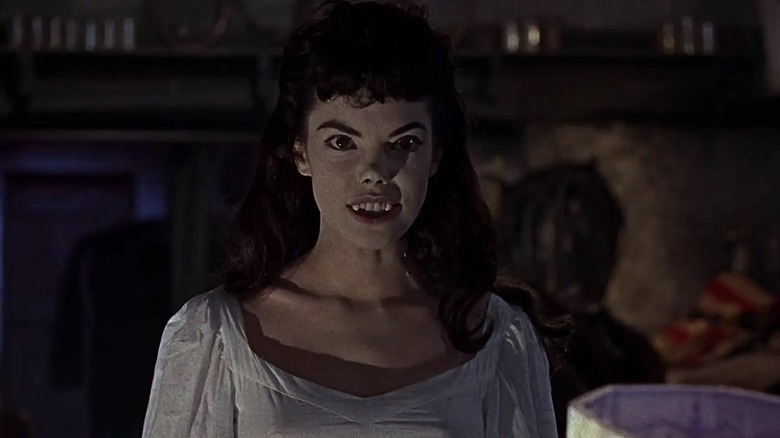
Christopher Lee's Dracula was a serial monogamist, living from bride to bride in "Horror of Dracula," so the title of this first Hammer Horror sequel is a bit misleading. This isn't a movie about the three classic brides in Dracula's castle. In "The Brides of Dracula," Dracula is dead, "but his disciples live on," courtesy of the new blonde head vampire, Baron Meinster (David Peel). Lee sat this movie out, but in his absence, Peter Cushing returned to deliver what Bloody Disgusting calls "the definitive Van Helsing performance as a beacon of righteousness" against evil.
"The Brides of Dracula" deftly maneuvers between well-worn tropes, like the arrival of a foreign guest at a vampire's castle, to deliver scenes of pure dread, where the forces of darkness are set free from their leg irons and beautiful undead brides rise from the ground and their coffin. You may have seen one of them, the unforgettable Gina (Andrée Melly), on TV in the background of "The Matrix Reloaded."
Black Sunday (1960)
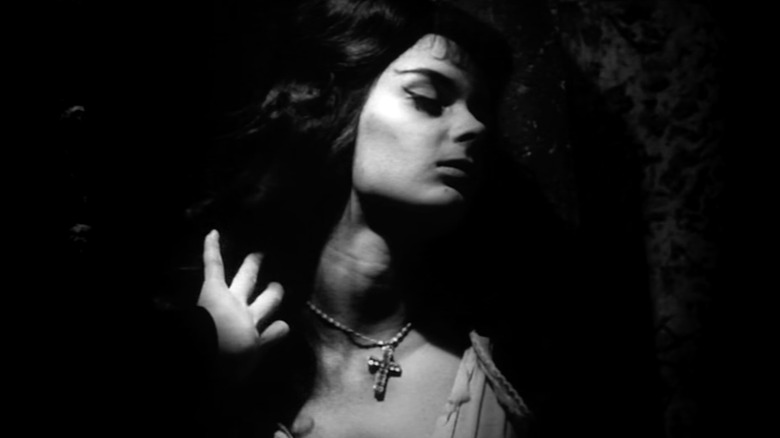
The English version of "Black Sunday" opens with talk of "those monstrous beings thirsty for human blood, to whom tradition has given the name of vampires." However, much like "The White Reindeer," the film throws both vampire and witch ingredients into the same cauldron, so that you're just as likely to see Asa Vajda (Barbara Steele) being burned at the stake as repelled by a cross.
In the opening minutes, Asa also has an iron-maiden-like Mask of Satan hammered into her face (the film's Italian title translates as "Mask of the Demon"), but 200 years later, she's ready to rise from her coffin and take her revenge. Giallo filmmaker Mario Bava, who later helmed "Planet of the Vampires," made his official directorial debut with this black-and-white shocker, which makes a strong impression with its camerawork as it takes the viewer down into a cobwebbed tomb and gives a full 360-degree tour of it.
Black Sabbath (1963)
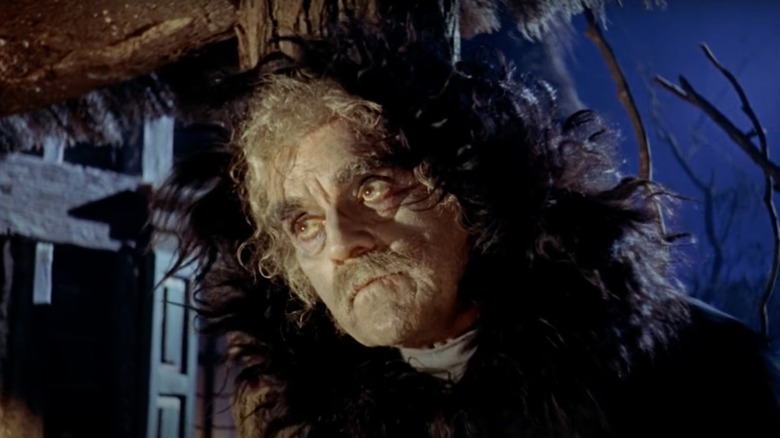
Mario Bava and Boris Karloff were at it again in 1963 with the horror anthology that supplied the rock band Black Sabbath with its name and later provided Quentin Tarantino and Roger Avary with inspiration for the tripartite structure of "Pulp Fiction." Only one third of "Black Sabbath" — the spooky, Karloff-led segment "The Wurdulak" — qualifies as a vampire film, but it sees him graduating from the vorvolaka witch hunt in "Isle of the Dead" to a genuine undead feast.
He doubles as the anthology's host, and as Motion Bitcher notes, this is the only time Karloff himself inhabited a bloodsucker role. The wurdulak is a Russian vampire that forms a coven out of family members it has fed on. So much of existing vampire mythology involves fear of an external threat, the foreign invader, the inhuman outsider. In "The Wurdulak," the vampire call is coming from inside the house. It's your own flesh and blood, and it wants a bite of your neck.
Dracula: Prince Of Darkness (1966)
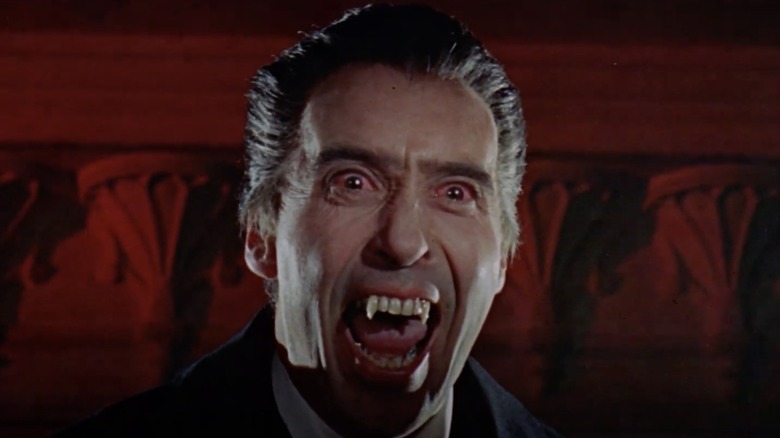
"Why should a dead man be interested in entertaining guests?" asks the original trailer for "Dracula: Prince of Darkness." Answer: because reports of his death by sunlight in Hammer's "Horror of Dracula" were greatly exaggerated. In "Dracula: Prince of Darkness," Christopher Lee returned to the title role for the first time, though he doesn't speak a single word of dialogue before they put him back on ice.
Forget Jonathan Harker; in this movie, it's a whole adult family of four that a rude, knife-wielding coachman abandons in the Carpathian Mountains. There's already a table waiting for them at Dracula's castle, and the only one capable of reading the tea leaves and reacting with appropriate fright is vampire-to-be Helen Kent, played by "Village of the Damned" star Barbara Shelley.
Considering that "Dracula: Prince of Darkness" came out over 50 years ago, it's somewhat shocking to see the Count's manservant hang a bloke upside down and bleed him out like drip coffee over a powdered vampire. "Let the Right One In" pulled a similar trick, while Gary Oldman adopted Lee's chest-slicing fingernail move. Who knew a vampire could be drowned in running water?
The Fearless Vampire Killers (1967)
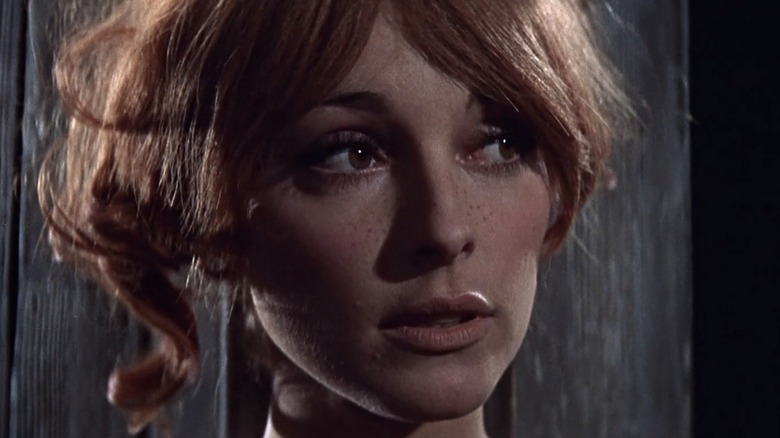
If you've never seen a Sharon Tate movie ("Once Upon a Time in Hollywood" doesn't count), she's luminous in "The Fearless Vampire Killers," though you wish they wouldn't withhold her so much and would give her something more to do besides Baroque dance and take bubble baths. "They" really means her future husband, Roman Polanksi, who directed, co-wrote, and co-stars as one of two bumbling vampire killers, the other being Jack MacGowran ("The Exorcist"), made up to look like Alfred Einstein.
As a horror comedy, "The Fearless Vampire Killers" isn't particularly funny; in his one-star review, Roger Ebert observed that nobody in the audience laughed when he saw it. That's not to say it's a mirthless affair, just that it's dull in parts. There's talk of vampire "grooming" here, and Polanski himself has a reputation for being something of a vampire at large. However, as a piece of film history, this might be worth watching for Tate and its early intimations of Polanski's recurring interest in Satanists, as when Count von Krolock (Ferdy Mayne) horns his fingers and says, "With Lucifer's aid, we might look forward to a more succulent occasion."
Dracula Has Risen From The Grave (1968)
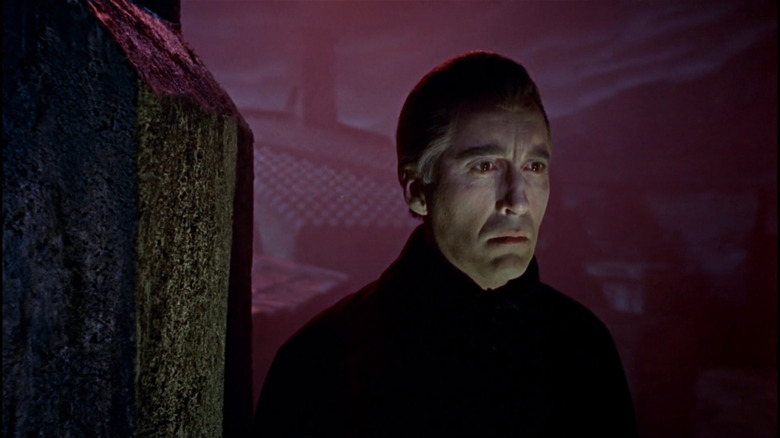
"Dracula Has Risen from the Grave" shows further overlap between Hammer Horror and early British folk horror, not only with Christopher Lee, who would play Lord Summerisle in "The Wicker Man," but in the presence of Barry Andrews, who would show up again soon in "Blood on Satan's Claw." His character's open atheism in this film adds a new wrinkle to the mythos, leaving him beholden to blind luck in lieu of religious weapons against vampirism like prayer.
Dracula still jumps straight out the window at the sight of a cross, but wooden stakes offer no guarantees, and those with faith are as vulnerable as those without it, as we see with the priest he puts in his thrall. Women back away from Drac yet eventually submit to his will, offering up their bosoms and necks to him in vampire POV shots. Buxom bar wenches and nasty, snake-like bites also characterize Lee's third outing as the red-eyed Count, which picks up right where "Dracula: Prince of Darkness" left off.
The Omega Man (1971)
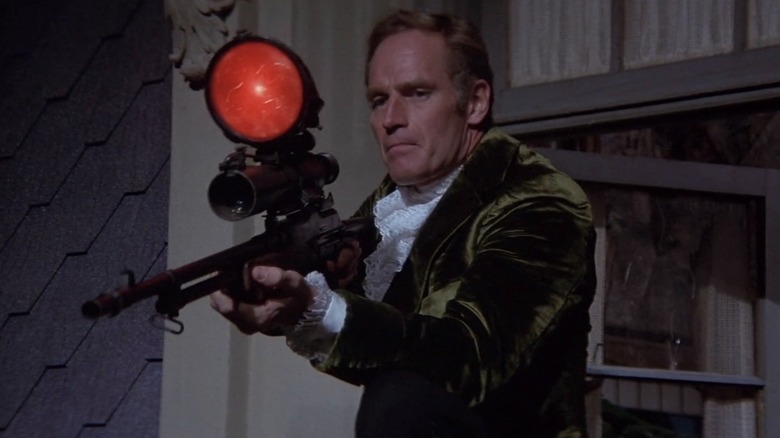
"Is this the conclusion of all our yesterdays?" The second adaptation of Richard Matheson's novel, "I Am Legend," has onetime NRA president Charlton Heston's character, Robert Neville, mowing down albino mutants with a submachine gun. There are a lot of guns and afros in this movie.
The "half-dead" mutants, who form a cultish, Manson-like Family, only emerge after sunset, but they still complement their black robes with dark sunglasses to hide their vampire eyes. Don't be fooled, though, because they're more well-spoken than the usual Darkseekers and indeed fully capable of catapulting fireballs at Neville until he starts sniping them with an automatic rifle like the trigger-happy, Hippocratic Oath-breaking doctor he is.
In "The Omega Man," the camera pulls back to show the empty streets of a progressive post-apocalypse with interracial romance. Yet the mutants, somewhat questionably, can only be cured through a white man's blood transfusion—and he's not opposed to going out in military get-up and a Jesus Christ pose.
The Night Stalker (1972)
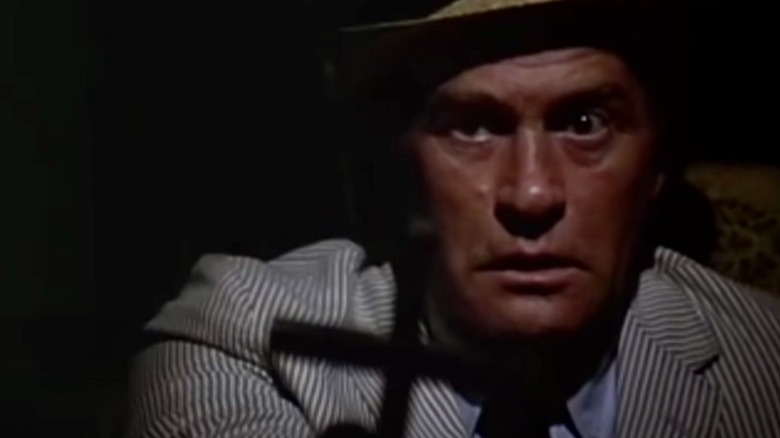
Midway through the vampire movie century, another Richard Matheson teleplay based on a then-unpublished Jeff Rice novel about a bloodsucker on the loose in Las Vegas became the most-watched TV movie ever. Intrepid reporter Carl Kolchak (Darren McGavin) initially thinks the city has a serial killer on its hands. The opening credits of "The Night Stalker" play out from the POV of a victim being autopsied, but it turns out this victim and others have been drained of blood.
This is the perfect story for an "amateur bloodhound" and night editor like Kolchak. If it bleeds, it leads, and if it bites at night, it's probably a vampire (one who might go on the rampage and raid the hospital fridge for blood, throwing subtlety out the window with a hapless orderly). "The Night Stalker" and its follow-up series "Kolchak: The Night Stalker" inspired "The X-Files," which is why creator Chris Carter cast McGavin as the father of the X-Files, Arthur Dales. Fifty years later, this movie still rings true in its depiction of a police bureaucracy that would rather suppress the news than see it reported truthfully.
Blacula (1972)
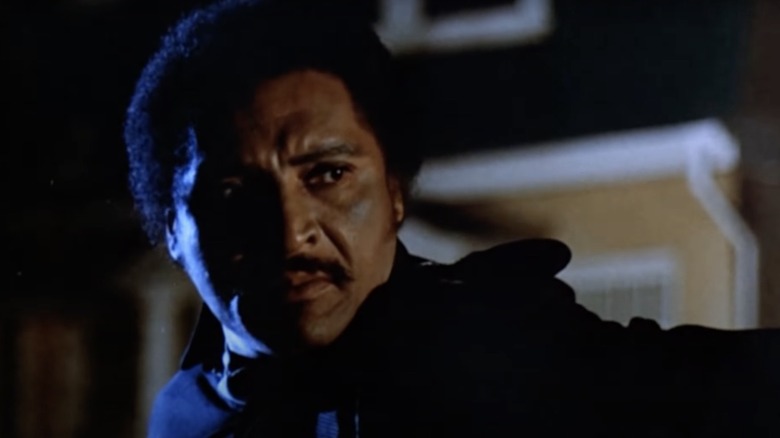
"We can't ignore what the world characterizes as the black arts." So sayeth the African prince Mamuwalde (William Marshall), but is he talking about the surface-level topic, the occult, or the Black arts as in Black cinema? At the outset of "Blacula," Mamuwalde's wife refers to him as "the crystallization of our people's pride" as he negotiates with Dracula about ceasing the slave trade. The year is 1780 and the setting, naturally, is Transylvania, but when his evil vampire host insults him, bites him, and locks him in a coffin for 200 years, Mamuwalde soon emerges in the blaxploitation era.
In the Shudder documentary "Horror Noire," filmmaker William Craine recalled the experience of being a Black director working with an all-white crew and facing studio resistance when he wanted to de-segregate the dancing couples in the nightclub in "Blacula." The movie has its issues; instead of a Black person being the first to die per horror movie cliché, it's two gay guys, which seems like robbing Peter to pay Paul, representation-wise. But with lines like, "Strange how so many sloppy police jobs involve Black victims," "Blacula" already knew the score 50 years ago.
The Legend Of The 7 Golden Vampires (1974)
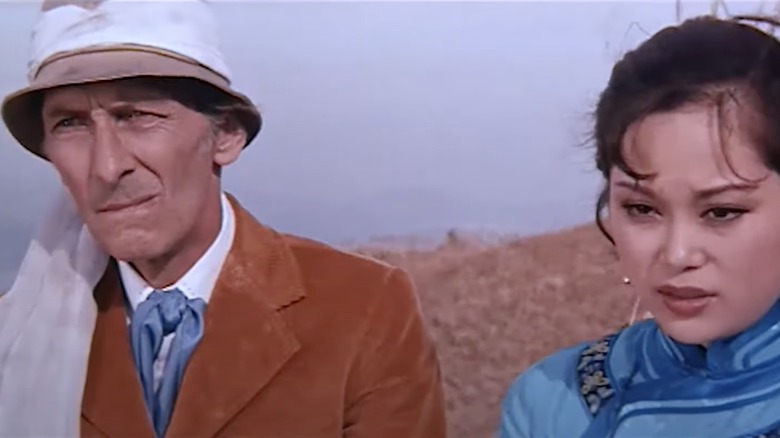
The seven titular vampires have poor complexions, and apart from Hsi Ching (David Chiang), the seven brothers who fight them don't have very distinguishable personalities besides the weapons they're assigned. But the final entry in Hammer Horror's Dracula series, "The Legend of the 7 Golden Vampires," is a Shaw Brothers co-production that earns points for attempting cross-cultural relations with Hong Kong—where it was made entirely on location.
This was Peter Cushing's last hurrah as Van Helsing. Three years later, Cushing would play Grand Moff Tarkin in the original "Star Wars" movie. The way Van Helsing's son enjoys another Eurocentric interracial romance while Ching and Vanessa Buren (Julie Ege) are punished for theirs betrays an undeniable double standard in "The Legend of the 7 Golden Vampires" (which is nothing if not a product of its time). Hong Kong ultimately fared better with its own vampire/kung fu mashup, "Mr. Vampire."
Vampire's Kiss (1988)
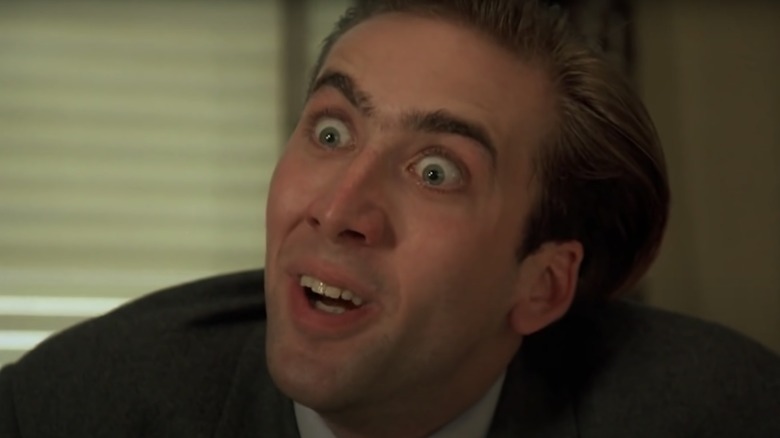
Nicolas Cage is set to appear as Dracula next year in "Renfield," but it won't be the first time he's worn fangs or played the boss from hell. Imagine Cage as a cockroach-gobbling version of Patrick Bateman who thinks he's a vampire instead of a serial killer. Now, imagine him bulging his eyes as wide as they'll go and adopting a voice that sounds like a wacky pre-impression of Keanu Reeves' English accent in "Bram Stoker's Dracula" (which Cage's uncle, Francis Ford Coppola, directed).
Ladies and gentlemen: "Vampire's Kiss." This movie, written by Joseph Minion ("After Hours"), was an early indicator of Cage's over-the-top, Nouveau Shamanic acting inclinations. Anyone who thinks those only developed later when he started churning out more meme fodder in direct-to-video 2010s films owes it to themself to watch this bizarre, horrific '80s flick, which costars María Conchita Alonso, Elizabeth Ashley, future "Eve's Bayou" director Kasi Lemmons, and Jennifer Beals as a kind of energy vampire born of a man's disturbed psyche.
Nadja (1994)
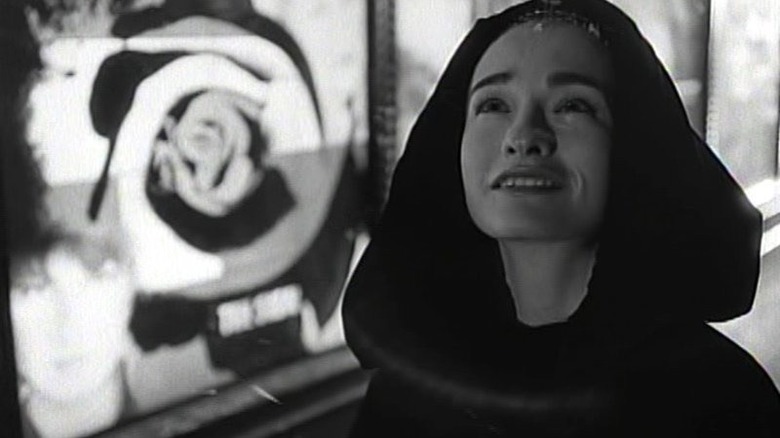
The New York indie film scene in the mid-1990s was a veritable vampire catacomb, yielding "Nadja," "The Addiction," and the next entry on this list in rapid succession. Written and directed by Michael Almereyda, "Nadja" is the black-and-white bridge between "Dracula's Daughter" and "A Girl Walks Home Alone at Night." The title character, played by Elina Löwensohn ("Schindler's List"), actually is Dracula's daughter, and she's got a sweet tooth for the blood of shark embryos. Jared Harris plays her vampire brother and Peter Fonda plays a long-haired, bicycle-riding Dr. Van Helsing. Where else are you going to see that?
"Nadja" costars Suzy Amis, Martin Donovan, and Galaxy Craze, but you won't always see their faces clearly because the movie makes heavy use of pixelated scenes, shot on a toy camcorder, whenever Löwensohn's character uses her vampire powers. Sitting through that kind of arthouse affectation might test the patience of some viewers, but if you're in the mood for something like early David Lynch, he executive produced "Nadja" and makes a cameo in it as a morgue receptionist.
Habit (1997)
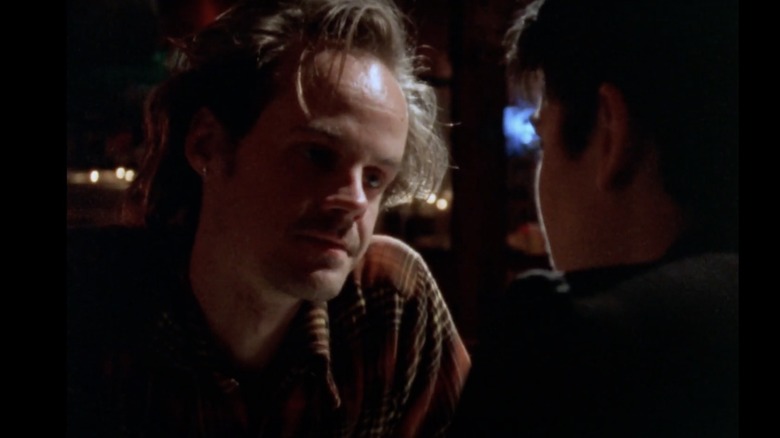
In 2021, Larry Fessenden made a return to the vampire genre with "Jakob's Wife." Twenty-five years ago, he wrote, directed, and starred in the Independent Spirit Award-winning "Habit," which throws his character, Sam, into a relationship with a possible vampire. Her name is Anna (Meredith Snaider, who never made another movie after this), and she tends to bite his lip and suck blood from it and other places during the throes of passion. He's a beer-swilling slob who's missing a front tooth; she's the beautiful stranger who's out of his league but first takes interest in him at a Halloween party.
Filmed on an estimated budget of $200,000, "Habit" is set against a backdrop of recognizable Manhattan landmarks and a self-destructive society where "vampirism is everywhere." It's not only "at the bottom of a bottle or a needle in the arm," but in "500 channels of insipid cultural drivel, the advertising and gluttony, draining of us of our ability to think." Face it: it would probably have a field day during the streaming age.
John Carpenter's Vampires (1998)
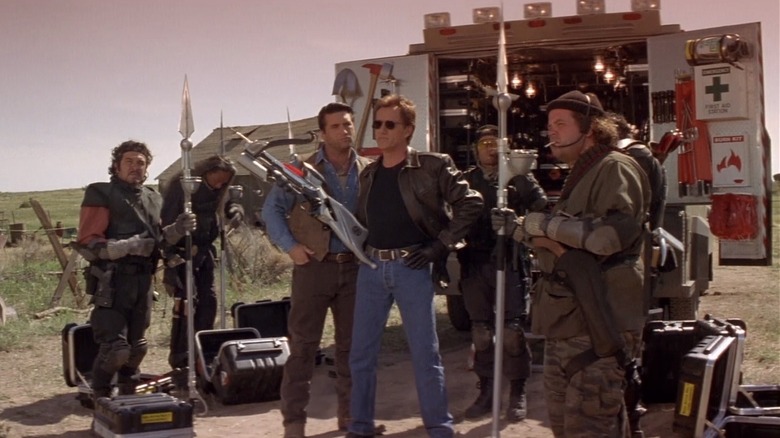
B-movie fans might dig it, but it's hard to root for the vampire hunters in "John Carpenter's Vampires." Jack Crow (James Woods) wields a crossbow and an attitude as he leads his squad into a nest while his Baldwin-brother lieutenant winches bloodsucking "goons" into the sunlight. The Catholic Church sponsors them, but you wouldn't know it from the way they act: whoring it up in a motel like it's the Titty Twister, bribing a lawman, jacking Frank Darabont's civilian car at gunpoint, smacking around Sheryl Lee's character and even tying her naked to a bed (did they not see "Twin Peaks: Fire Walk with Me?" Give the woman a break), beating up and torturing a well-meaning priest, and just generally being aggressive, misogynistic, and homophobic.
After hearing their laundry list of crimes against humanity, you'd think they were the vampires, but no, that's the inverse-exorcised goth Valek ("Cobra Kai" baddie Thomas Ian Griffith). The blues-guitar sounds in this vampire Western belong to Carpenter's Texas Toad Lickers.
Immortality (1998)
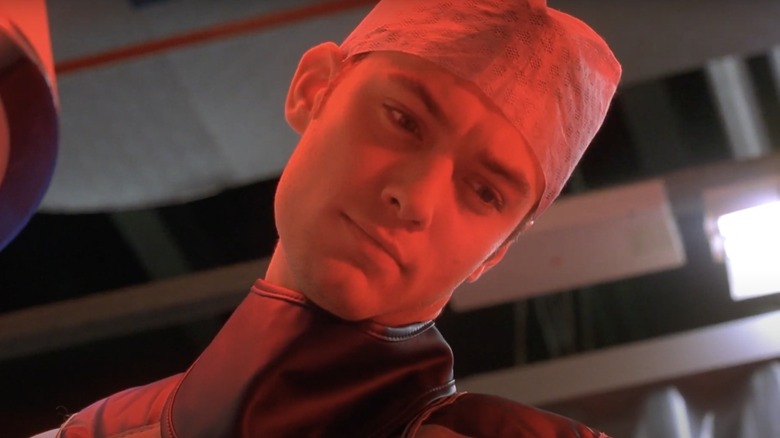
It was either this or "Tales from the Crypt: Bordello of Blood," and let's face it: that movie is pure trash. This one has Jude Law playing a London pseudo-vampire named Steven Grlscz, who might appeal to your inner hopeless romantic if, like Nadja herself (Elina Löwensohn again, playing a human here rather than Dracula's daughter), you "like a man with a bit of mystery about him." Grlscz lacks fangs and the traditional vulnerability to sunlight, but he casts a long, "Nosferatu"-like shadow and moves much quicker than any human. He believes we have three brains: "one that is human, built over another that is mammalian, built over yet another that's reptilian." Hence the movie's alternate title, "The Wisdom of Crocodiles."
I was first exposed to "Immortality" through one of my university professors; she had an office full of DVDs like this and had co-edited a book called "Draculas, Vampires, and Other Undead Forms," with a chapter she co-authored about "The Compulsions of Real/Reel Serial Killers and Vampires." That's a clue to the nature of "Immortality," which lies somewhere between a vampire film and an episode of "Dexter."
Stay tuned for our final 21st-century list and Year of the Vampire wrap-up in December.
Read this next: The 95 Best Horror Movies Ever
The post Year of the Vampire: 20 More 20th-Century Films to Quench Your Thirst for Blood appeared first on /Film.
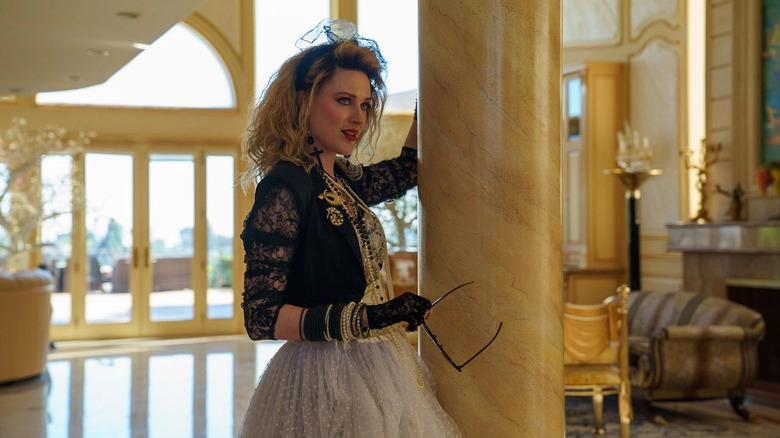
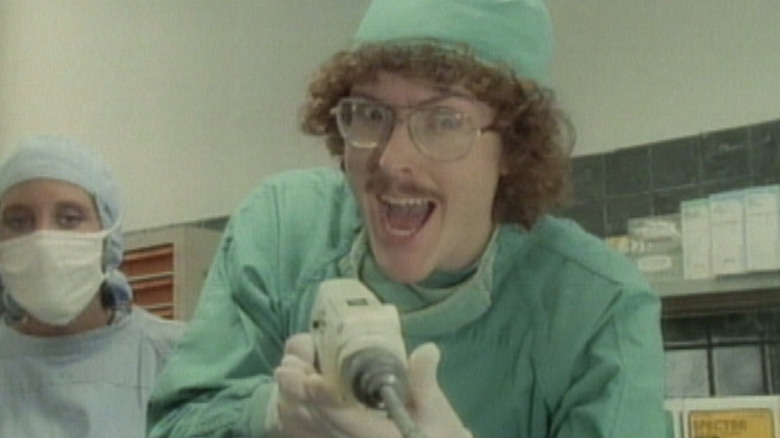
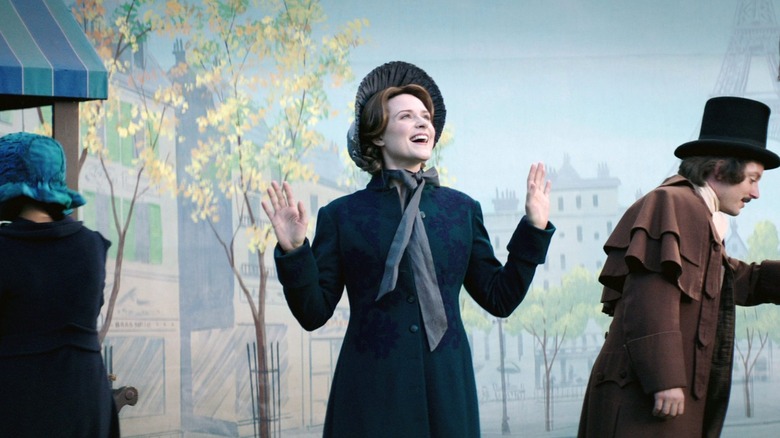
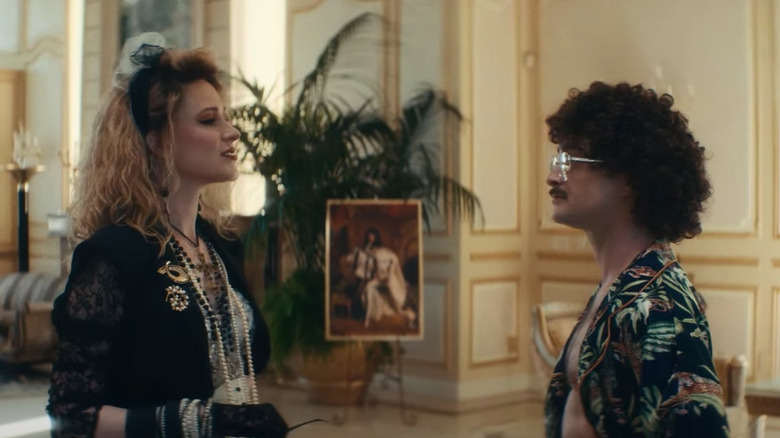
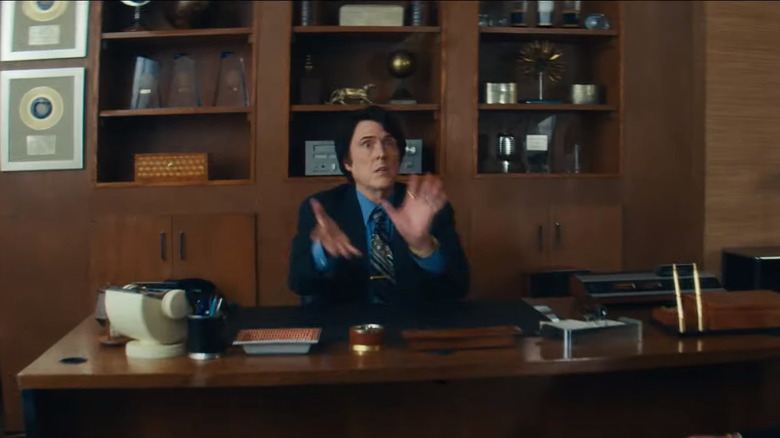
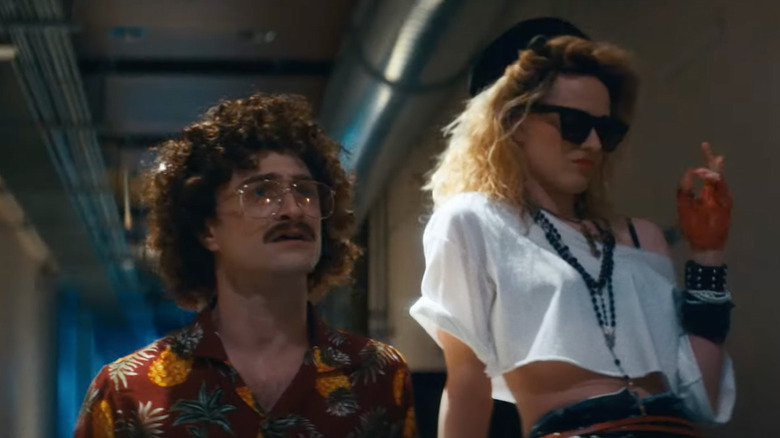
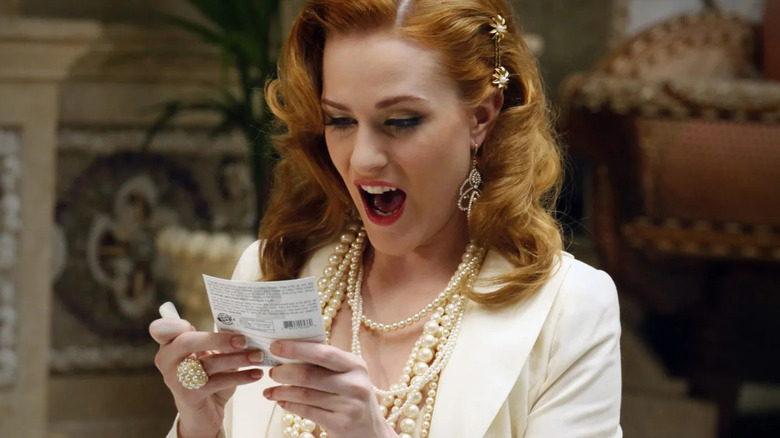
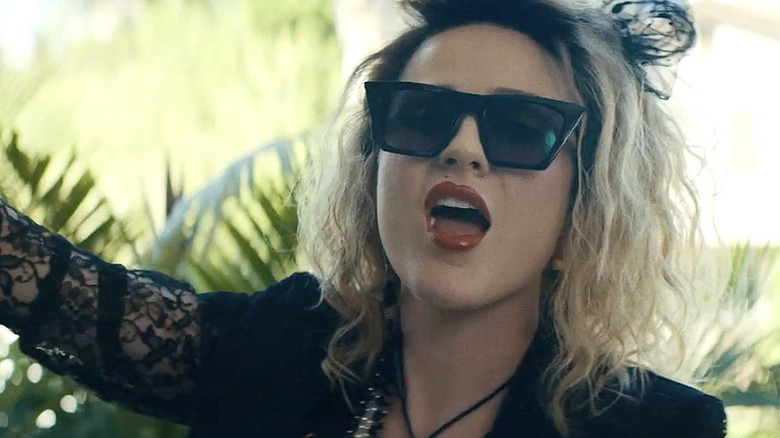
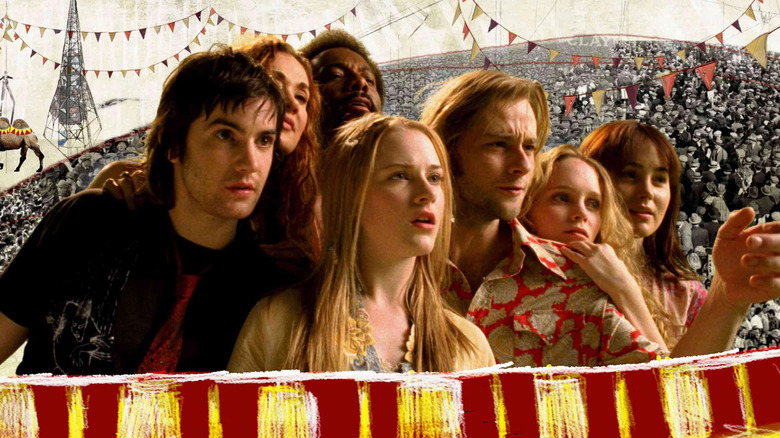
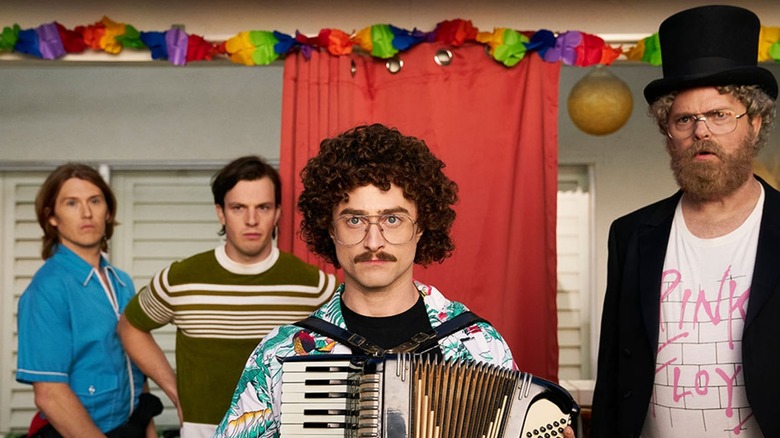
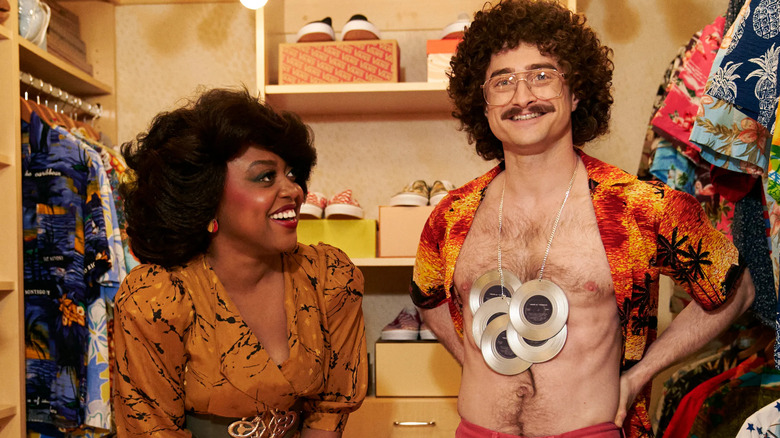























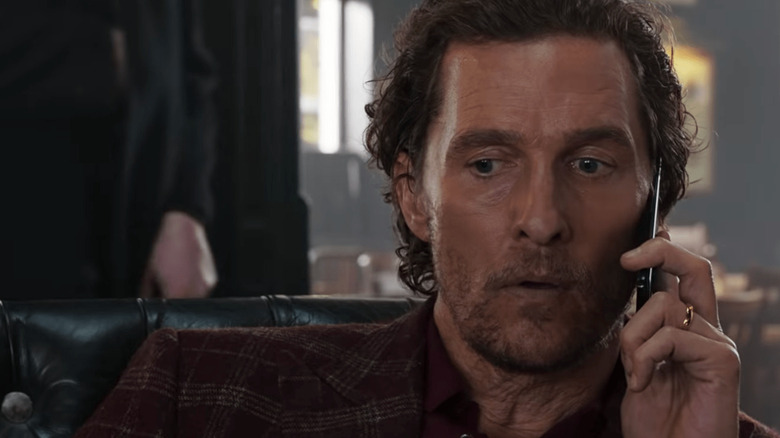
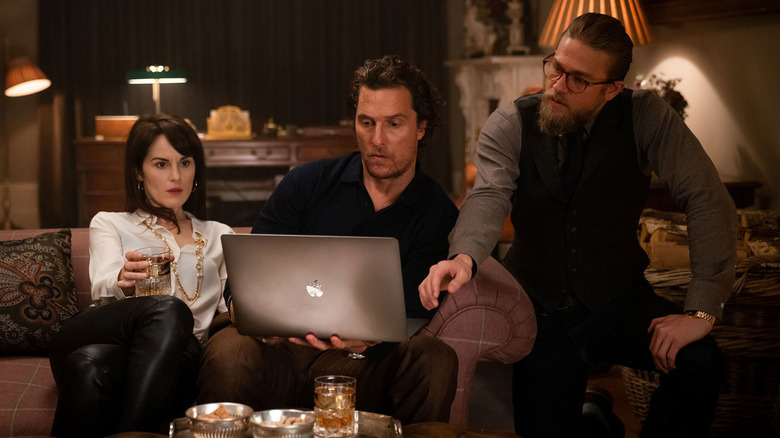
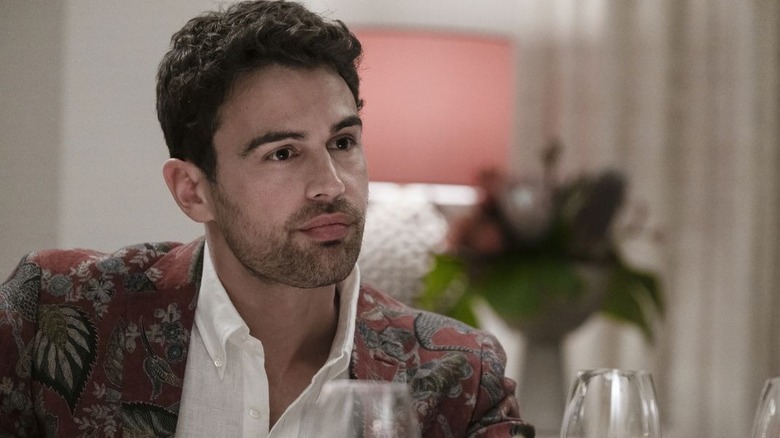
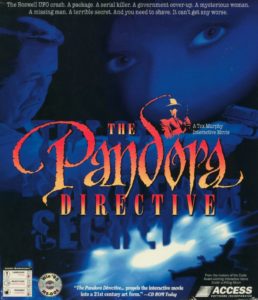
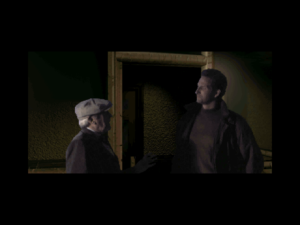
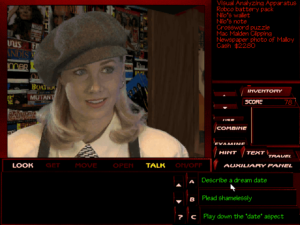
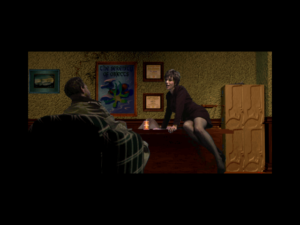
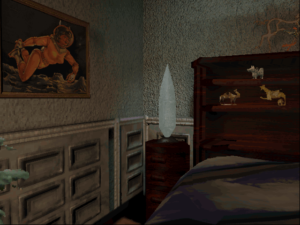

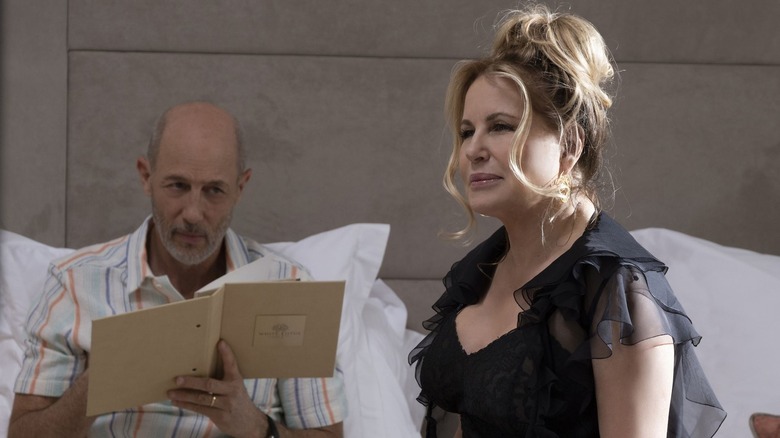
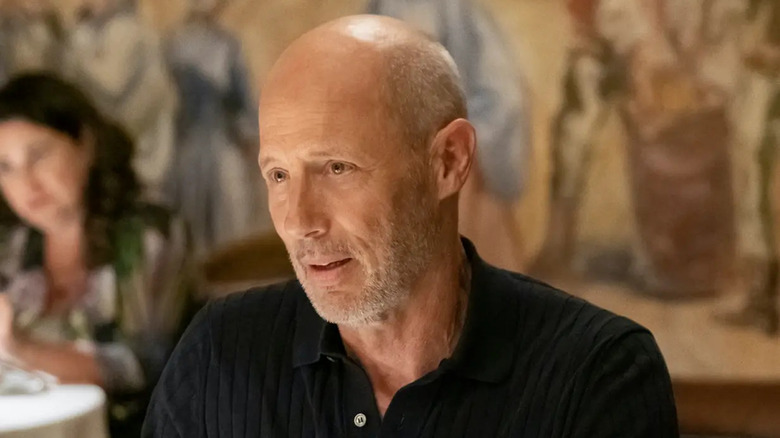

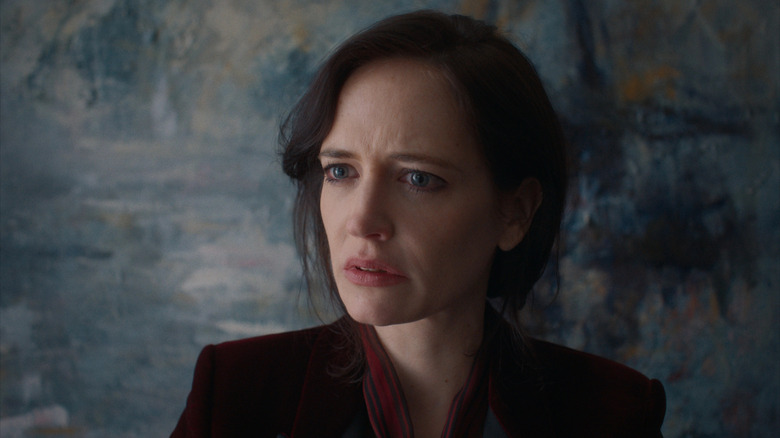
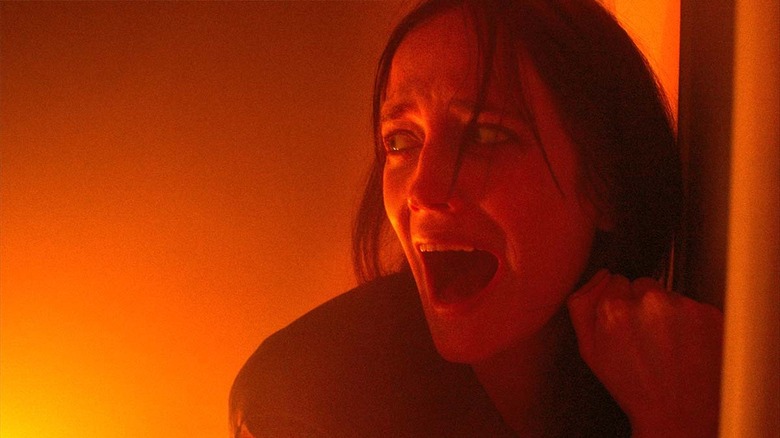
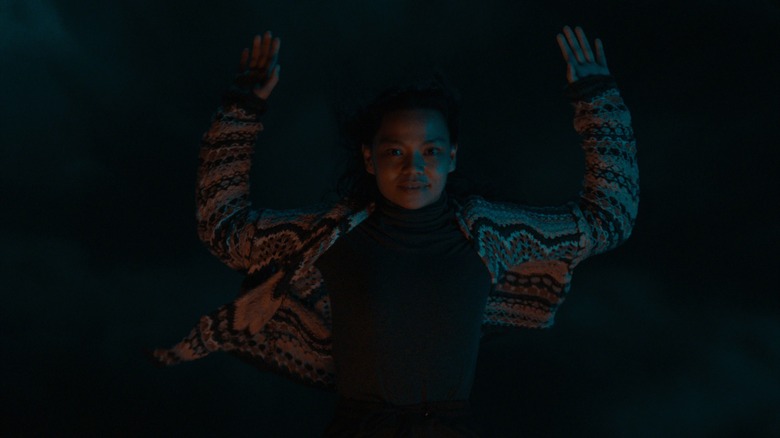
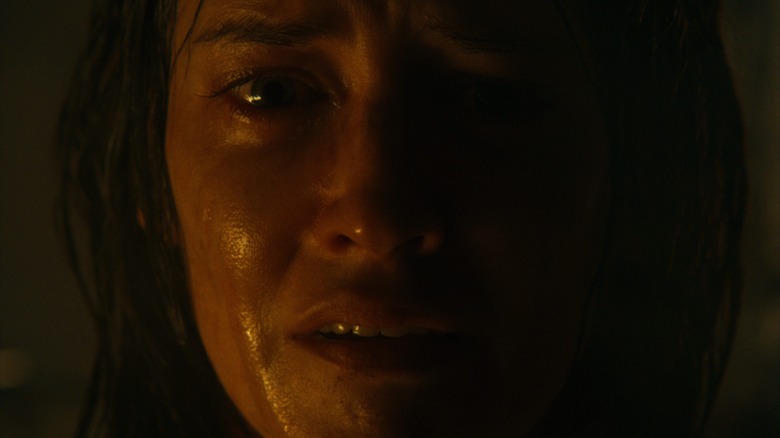


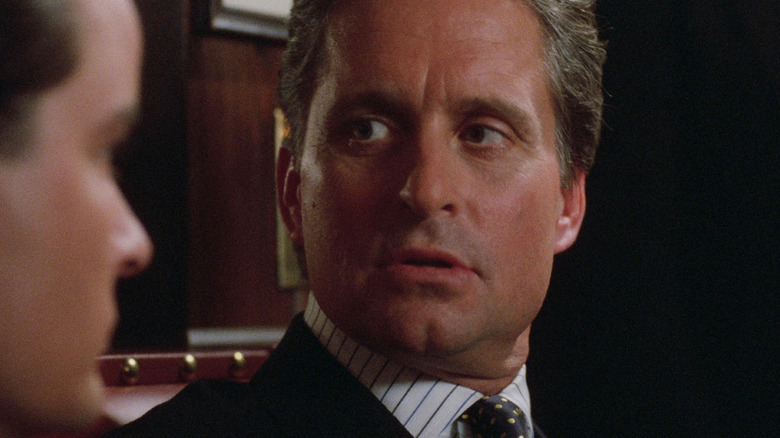
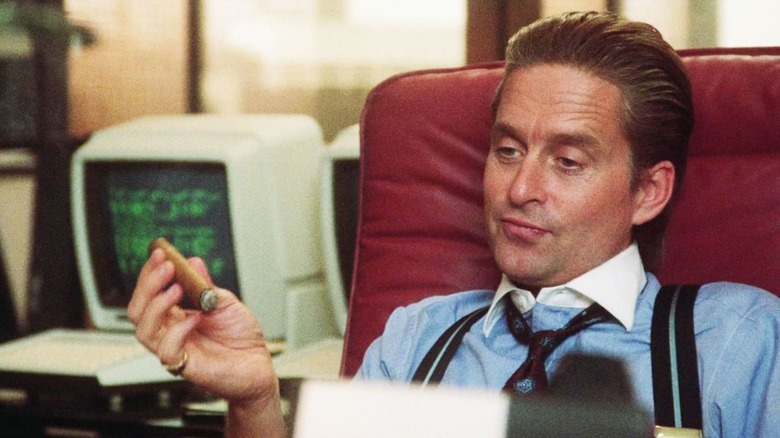
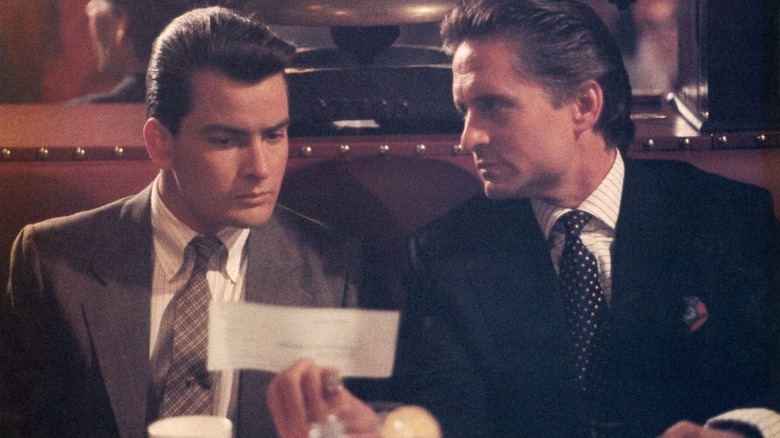
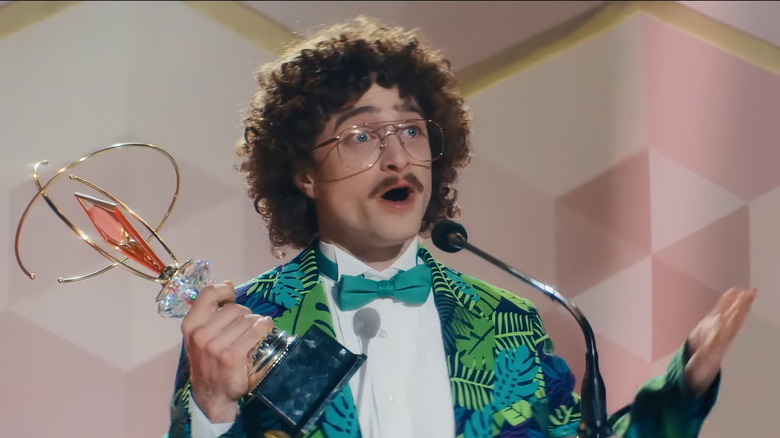
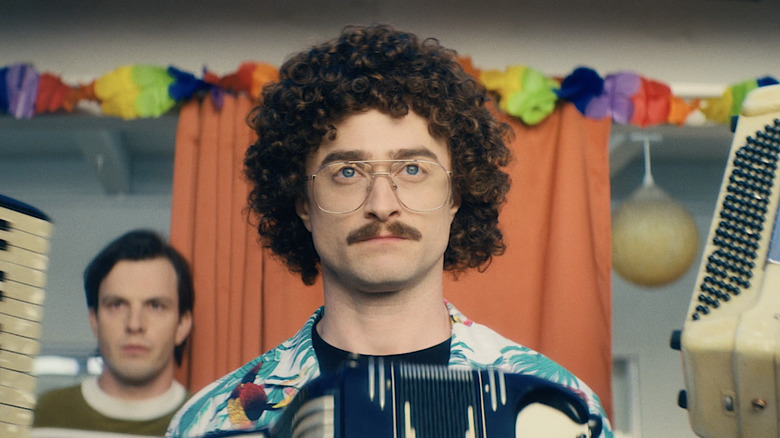

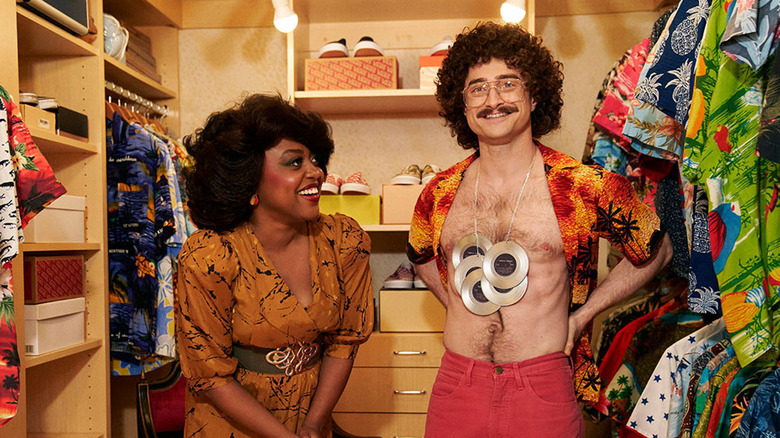

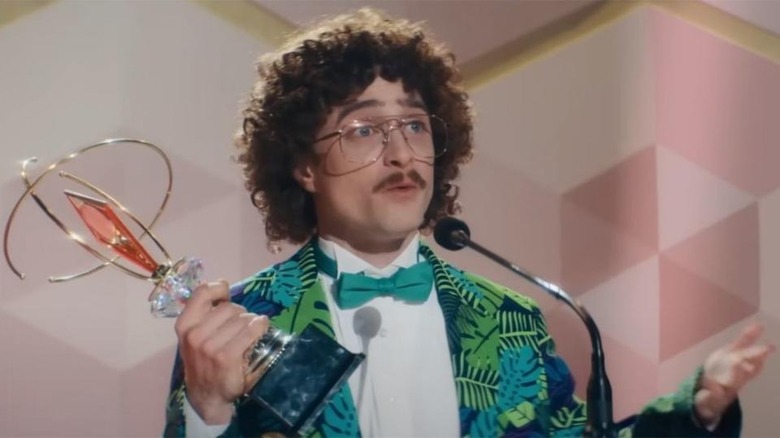





 2.1 Support – The industry’s only high-end gaming graphics cards to support DisplayPort 2.1 technology with UHBR 13.5, offering up to 54Gbps of display link bandwidth and enabling high-refresh 4K (up to 480Hz) or 8K (up to 165Hz) gaming on next-gen displays.
2.1 Support – The industry’s only high-end gaming graphics cards to support DisplayPort 2.1 technology with UHBR 13.5, offering up to 54Gbps of display link bandwidth and enabling high-refresh 4K (up to 480Hz) or 8K (up to 165Hz) gaming on next-gen displays.





































